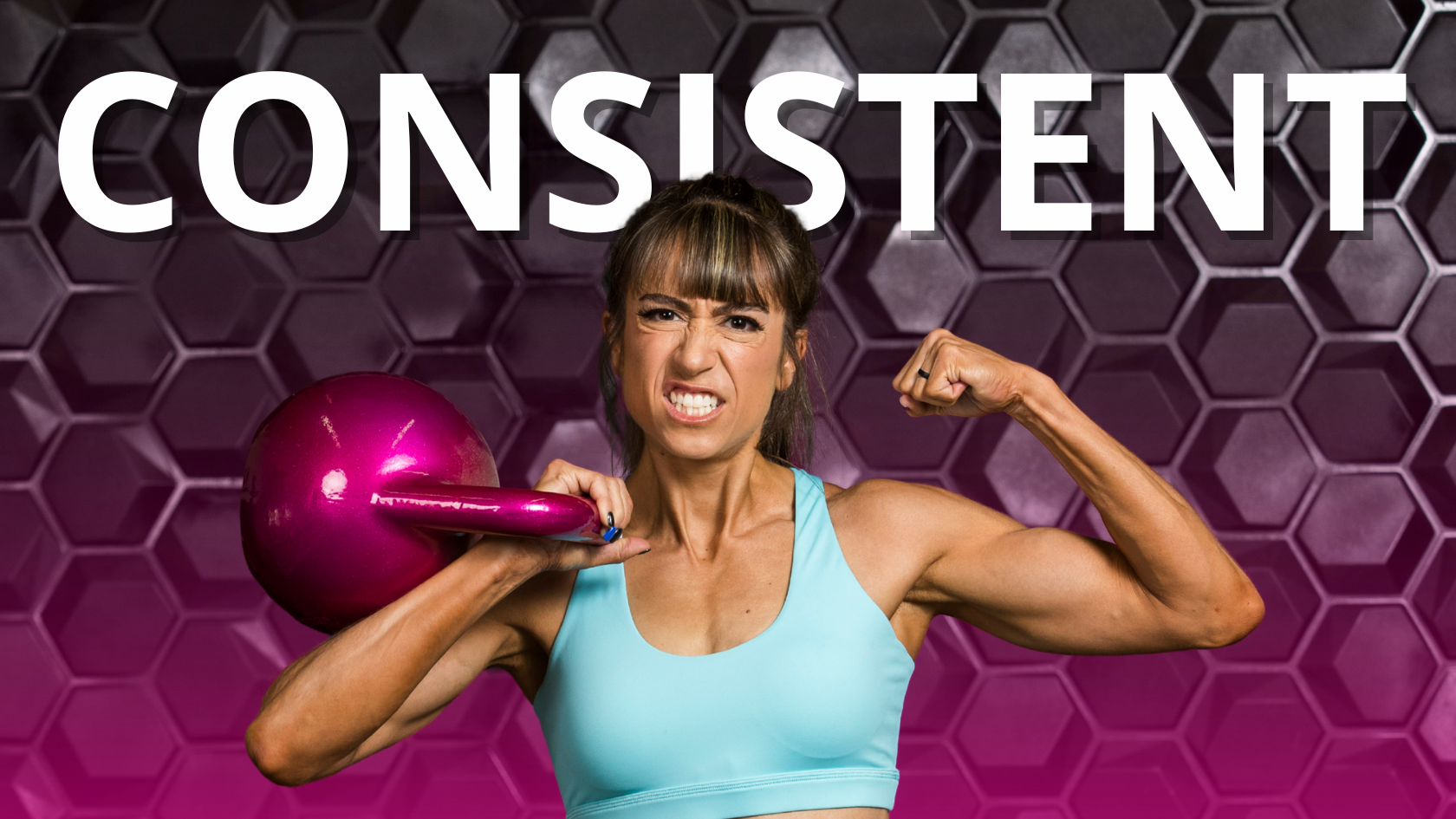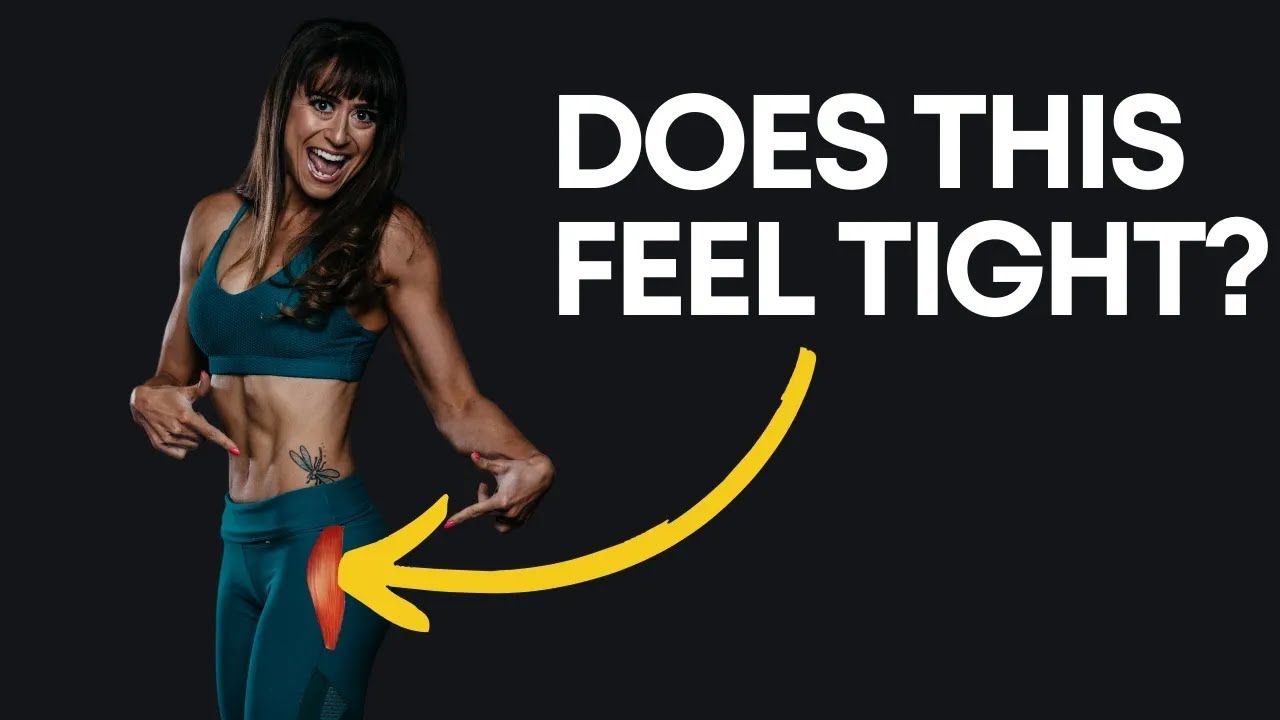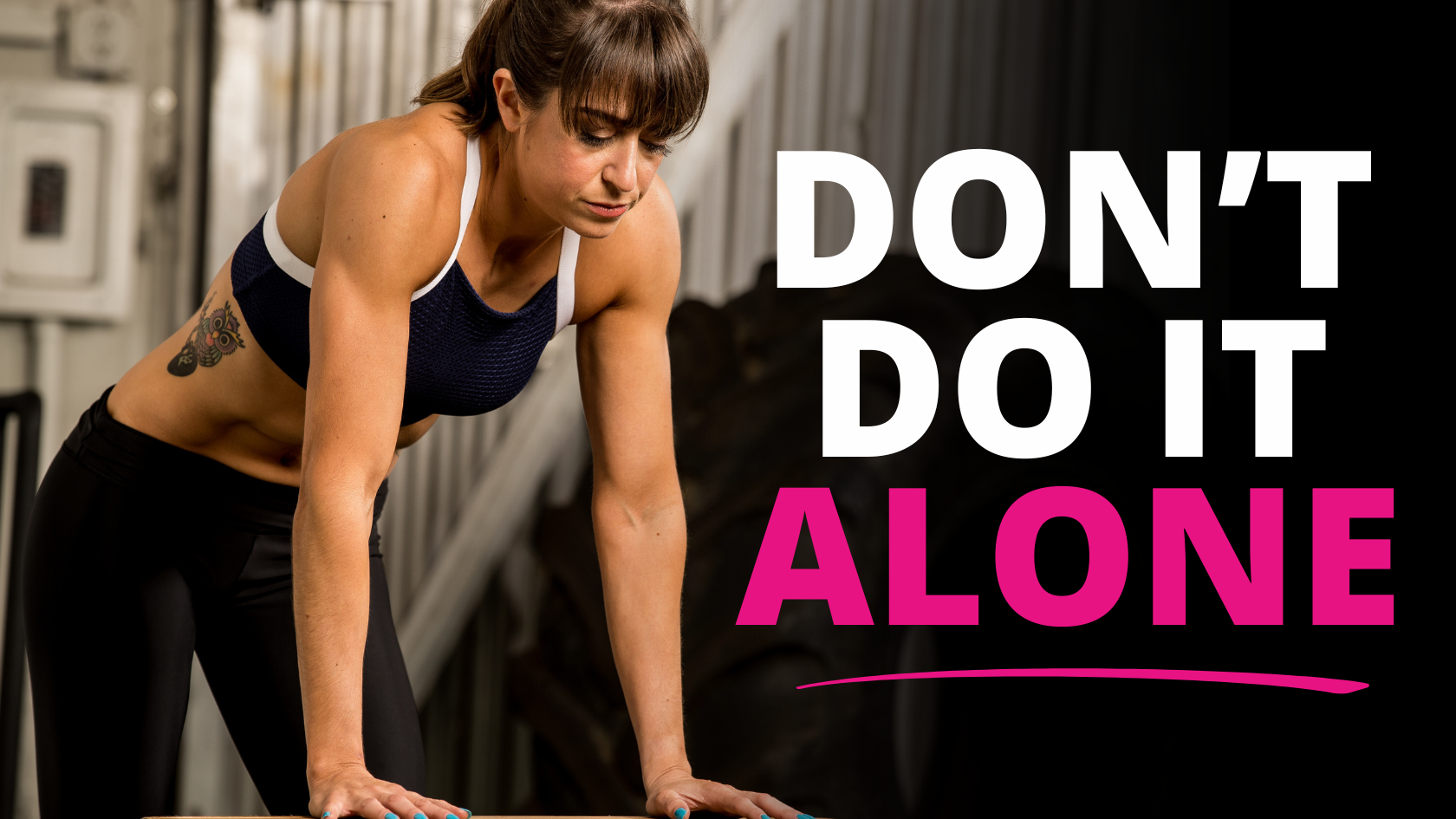
7 Habits Of Highly Consistent Humans
Change Requires CHANGE
If you’re feeling stuck and know deep down that you could be doing better, don’t wait any longer. Your life is not going to change until you take action and make a bold move towards your goals. If you’re ready to take control of your life and start moving towards the results you want let us help you achieve your goals. ⬇️
Change Requires CHANGE
If you’re feeling stuck and know deep down that you could be doing better, don’t wait any longer. Your life is not going to change until you take action and make a bold move towards your goals. If you’re ready to take control of your life and start moving towards the results you want let us help you achieve your goals. ⬇️
Transcript:
Open Transcript:
Cori (00:00):
Welcome to the Redefining Strength Podcast. Everything you need to succeed on your health and fitness journey, even the stuff you don’t want to hear. You don’t need more willpower. If you want to succeed, you need a better system. And I really think it boils down to seven habits. So I was thinking about Stephen Covey’s seven Habits of Highly Effective People, and I wanted to boil down what I see as seven habits of people who succeed. And instead of saying it as Seven habits of successful people, I’m going to call it seven habits of highly Consistent Humans. And the reason I word it that way is because it’s not just about the outcome and what someone’s doing when they’ve actually succeeded, it’s about the consistency in the changes they’ve made in the boring basic habits. It’s not about perfection, it’s about finding that plan and putting in those actions and learning from every experience.
(00:56):
So that’s why I’m calling it Seven Habits of Highly Consistent Humans because that consistency in those changes, in those mindset shifts in those actions. That’s what makes them ultimately successful. Because I do think too, when we’re thinking about success, we look at a person who is successful right now and what they’re doing right then and there, not what even got them there and what they’re doing at their end goal is going to be very different than the habits they might have started with. So if we’re just going to be like, well, this athlete trains this way, they’re training that way at that stage to get to that stage, you might have to do other things and by only trying to mimic what they’re doing, then you might be holding yourself back from moving forward. So it’s consistency in those changes and in the habits and in the mindsets that I think really pays off.
(01:37):
I wanted to break down the seven habits that I find very, very valuable to help you be consistent. I will tell you that none of them are perfection. The most successful people aren’t perfect. They’ve actually probably failed a whole heck of a lot more times than any of us have. And in those failures, they have learned what they need to move forward. So we have to really reframe it in our head of, I won’t fail to, how can I fail and learn from it? But number one, and this leads into it, is assessing before we act. This is habit number one, assessing before we act. How many times have you seen a new program been like, that’s it. That looks perfect. They say that it’ll achieve all these goals, and you jump right in, it looks perfect, it looks ideal. Did you actually assess if that fits you where you’re at right now?
(02:23):
Is that person at all in the same lifestyle or having the same experiences that you’re having? What makes you think that plan will even work? So often what we’re really doing is we’re planting a seed in a field just full of weeds, but we have to clear that field first. If we want to see results, we have to do all the prep work so that the seed is primed to really grow, yet we don’t treat our goals the same way we’re planting this new habit, this new program, this new whatever in this lifestyle that’s just overgrown with all these bad habits. It’s why I always say when we’re learning new habits, there’s an unlearning phase that also has to come with it, but often we just try and force the new habit on top of what’s already there instead of even embracing that unlearning. So the best thing we can do if we want to see success, if we want to be able to get consistent with something is first assessing before we act, do the prep work.
(03:14):
Slowing down to speed up is not sexy and least, but it’s super important. Then set a personal GPS. Where do you want to go and where are you currently? And I say that because a lot of times we do have our goal. I want X. Okay, well what does X really look like? What does your destination really look like so that you can get a very clear plan in place to get there? But also where are you currently when you set your GPS, you have to enter both destination and current location to get an accurate roadmap. Yet so often we don’t really reflect on where we are now to see how far we have to go. We just assume and sort of point at a direction on there. And then on top of that, we pick a plan based on potentially what looks good based on somebody at the goal.
(03:54):
But what we don’t recognize is we’re looking at the last couple turns we have to make to get to our destination, not what they did at their starting location. We have to first start with the turn out of our driveway. I dunno about you, and maybe not quite this bad, but if we turn the wrong way out of our driveway, which I probably have done, honestly, we’re not going to be set up for success at all. We’re completely heading the wrong direction even. And then you have to turn around right from the beginning and no wonder we’re frustrated. That’s what it is when we go on a perfect plan versus assessing a plan that actually meets us where we’re at. So set your personal GPS really say, what does it look like to be at the destination? What does my current location look like and what are some steps I can do to build to get there?
(04:35):
Not just what are the last steps someone does while they’re at that destination. Then number three, spot the loop and break it. I call it the change loop because often what happens is we are really excited with a new program. We go all in and we create this habit overload where we’re doing so many changes that we feel like we’re just will powering our way through and we get more and more depleted and we think this isn’t sustainable. And then life starts to get in the way. We don’t see the exact outcome we want. The skill doesn’t seem to budge, right? And we hit a little emotional sabotage where we’re like, is this even worth it? And once we hit that point, it’s a very quick downturn into I quit and we fall off. And then eventually we get re-motivated because we don’t like where we are and we go for another program promise.
(05:17):
In order to break down a break out of that, we have to double down on what’s working. But that means that we also have to assess what’s causing that habit overload and even that emotional sabotage. So we have to recognize when are we trying to do too much? When are we trying to do habits that are too hard? When are we trying to do habits that do not match our lifestyle currently, even if they might be ideal or habits we need. Now, I’m not saying everything’s going to be easy as we’re making changes, but we do have to meet ourselves where we’re at. So if right now you are looking at a habit change that always creates that overload. And then if it doesn’t pay off that emotional sabotage where you want to quit, how can you break down one little part to double down on?
(05:57):
So if you’re like, Hey Corey, you always talk about macros. I want to track macros, but they just seem so overwhelming and I can’t hit my carbs and I can’t hit my fat. And I get really frustrated. Well, can you focus just on calories? Can you focus just on tracking? Can you focus just on protein? Can you focus just on adding protein to one meal and not even tracking to start? What is the habit you can do to build that success and that momentum over creating that overload? And then from there you can build more. But what we have to recognize is that effort doesn’t equal outcome. Effort doesn’t equal change either. It can feel like a lot of effort to do something that’s not making a whole heck of a lot of changes, which is why we’re not moving forward, which is where we can get that emotional sabotage when it doesn’t feel like the effort is paying off because effort doesn’t equal change.
(06:40):
We have to make changes to see that outcome, but we can feel emotionally like we’re working really hard without making a lot of changes just because the things that we are doing are very challenging to us. So really assess where am I repeating that loop? How am I causing myself to fall back into the same old pattern? And it’s not only breaking down habits, but recognizing things in your environment that are promoting it. If you put out your workout clothes and that always triggers you to go out, it’s not that you really got in the habit of just working out. It’s also that environment that shifted, that promoted you to do that or push you to do that. And so that can help you break out of the loop shifting your environment. If you’re always stressed and you always repeat the same pattern because you always walk into your house in the same way, how can you break that pattern, create that interrupt, that’s what will help you be consistent.
(07:24):
But you’ve got to recognize the hard you always hit that you want to turn back from. Then number four, sharpen your ax. So there’s the tail of the two wood cutters and they’re both trying to chop wood and the older wood cutter sits down to sharpen his ax at points because he knows that by sharpening his ax, he’ll be able to chop wood more efficiently. And he ends up beating the younger wood cutter who gets really mad because he didn’t take any breaks. And he is like, well, I should have beaten this guy because he only saw him as resting. It’s the whole slow down to speed up. He only saw him as resting, but really he was trying to be more efficient in his work. We don’t think about efficiency enough. We just think work harder, work harder, do more, do more, make more changes, make more sacrifices.
(08:08):
Instead of saying, Hey, how can I own? What is a non-negotiable to me? How can I own my lifestyle to plan for it? Because a lot of times when we do, we create a lot better consistency, we create a better mindset and we embrace changes more to allow them to snowball. When you feel successful with something, you want to do more of it when something doesn’t feel that bad to do, because if you’ve even owned all the struggles with it, you’re like, oh, I can do a little bit more. Right? And so we can create that efficiency in our work by how we plan ahead, how we assess what we want, how we even own that there will be struggles. And setting that GPS is a big part of it. Understanding where we are currently is a big part of it. Doing that prep work beforehand is a big part of it, but we’ve got to think about how can I be a little bit more efficient?
(08:49):
I even like to call it how can I be lazier? I’m always assessing how can I be lazier with something? How can I be lazier with hitting my macros? How can I be lazier with making it easy to get into my workouts every single time so I never miss one? How can I make it easier or be lazy with coming back from vacation so I get right back on track? The more you can start to say, Hey, I’m lazy. I want to own this and plan for that, the better off you’re going to be. It’s the efficiency of work. Number five, build systems. Don’t just rely on willpower. Things aren’t always going to be easy, but the more we make changes that meet us where we’re at, the more we’re going to build a system that drives us forward. And in building the system, it’s not just actions, it’s not just habits.
(09:27):
It’s not just tracking macros or doing workouts. It’s shifting mindsets too because our mindsets will ultimately dictate the actions we value and prioritize. And in creating systems, it’s recognizing when we don’t value or don’t prioritize something naturally, and then finding ways to make ourselves be able to do that. So something that if you don’t do at the beginning of the day and at the end of the day because you don’t fully yet value it, even though you know should value it, you know, should value meal prep, you know, should value doing your workout, but you don’t. And so at the end of the day when you are tired and you have to do all these other things, you’re going to do all those other things. You’re going to sit on the couch, well put that workout, put that meal prep first in the day, and then put at the end of the day the things you know that you will do no matter what because you do value them.
(10:10):
Creating that system is owning what you need to do to shift those mindsets, shift the environment, shift those habits, but it’s truly assessing what you need and steering into that. But it’s also making it almost so easy that you’re not relying on willpower because self-control isn’t an infinite thing. It’s like a gas tank. It gets depleted, it gets depleted from handling maybe kids getting sick and you having to pick ’em up or a boss at work doing something you don’t like, right? There’s all these other things in our life that drain our willpower and self-control when we have to respond positively or just handle them or whatever else. And so sometimes the things for us, there’s no self-control left for right. We deprioritize ourselves in favor of doing these other things. And so recognizing that to create systems that make it easy to not rely on willpower or self-control, that’s where success really happens.
(10:59):
And sometimes it’s not about doing more, it’s about doing less. It’s about learning to love the minimum even and embrace the minimum and maximize the minimum to move forward. Number six, turn pain into power. It’s painful to fail, it stinks to fall down, to have that setback, to not get the result we want, but in that is our power and that it is the best learning experiences. They stick with us. So anytime you have that struggle, own it. See the opportunity in it, see the power in it. See even that by saying, Hey, this is a positive. I can learn from this. I can get feedback from this. You’re showing yourself your own strength. That’s where strength is revealed, and confidence is built through what we overcome. So embrace that there is power in that pain and don’t minimize your goals. It might be five to 10 vanity pounds, it might be getting abs.
(11:49):
It might be things that you feel a little weird talking about, or they seem life or death are as important as your health or all these other things. Don’t minimize those goals though, because in what we overcome and what we conquer with those goals and the fact that we can dedicate ourselves and put ourselves first and get what we feel we deserve and optimize this one life too, and the struggles we overcome with those things, even if they seem for not as important a why, we’re even not valuing what we should value, that ability to overcome for those things, that pain almost, it’s powerful. And when we overcome it, it’s very, very powerful. Powerful. So don’t run from the struggles. Don’t hide from your goals. Don’t minimize them. Conquer them because they will teach you so much, which will help you move forward in so many areas of your life.
(12:38):
And honestly, the more we even say, Hey, there is pain in struggle, there will be setbacks. The more we own that and oversell the negative, the more we help ourselves get consistent with something or find minimums we can do even when there is that pain pushback. And then number seven, don’t start over. Just adjust. There honestly is no starting over in life because everything you’ve done prior has some impact on you. It’s not like a video game where you just come back and you get to restart in the size and you don’t have any of the negatives or the positives or any of those things. Don’t play enough video games, but you’re just starting over. But now with the knowledge, you’re not starting over. Everything that happened prior now has an impact. All those previous dieting attempts, they’ve turned different mindsets towards different habits. They’ve created metabolic adaptations.
(13:21):
There’s all these things that have built up. That’s why I always say when someone’s like, well, how long between these two photos? Well, six weeks, but my entire life led to what happened in those six weeks. Because I can embrace certain sacrifices. I can embrace certain tools or tactics because of the mindsets that have been created around them prior, my experiences with them, the knowledge that I have. So just recognize you are never starting over. So all you can ever do from where you’re at right now is just to keep moving forward. And the more you see it as that, the less guilt you also feel because you’re not starting over. You learn a lesson now you’re going to enact that lesson and you’re going to learn from it again. There is power in pain, but just recognize that you are not starting over. You are adjusting, and you’re going to be constantly adjusting because nothing in your life is standing still and nothing will work forever. So just remember when you are trying to move forward towards your goals, you can’t just think about the success you want. That’s why I call these the seven habits of highly consistent humans, because that’s ultimately what builds towards your goals. Getting consistent, but owning who and what you are and really reflecting on what you need at each stage to keep moving forward. That reflection, I can’t say enough about it because that really underlying all these different seven tips and habits is what makes you be able to utilize these as effectively as possible.
*Note: This transcript is autogenerated there may be some unintended errors.










